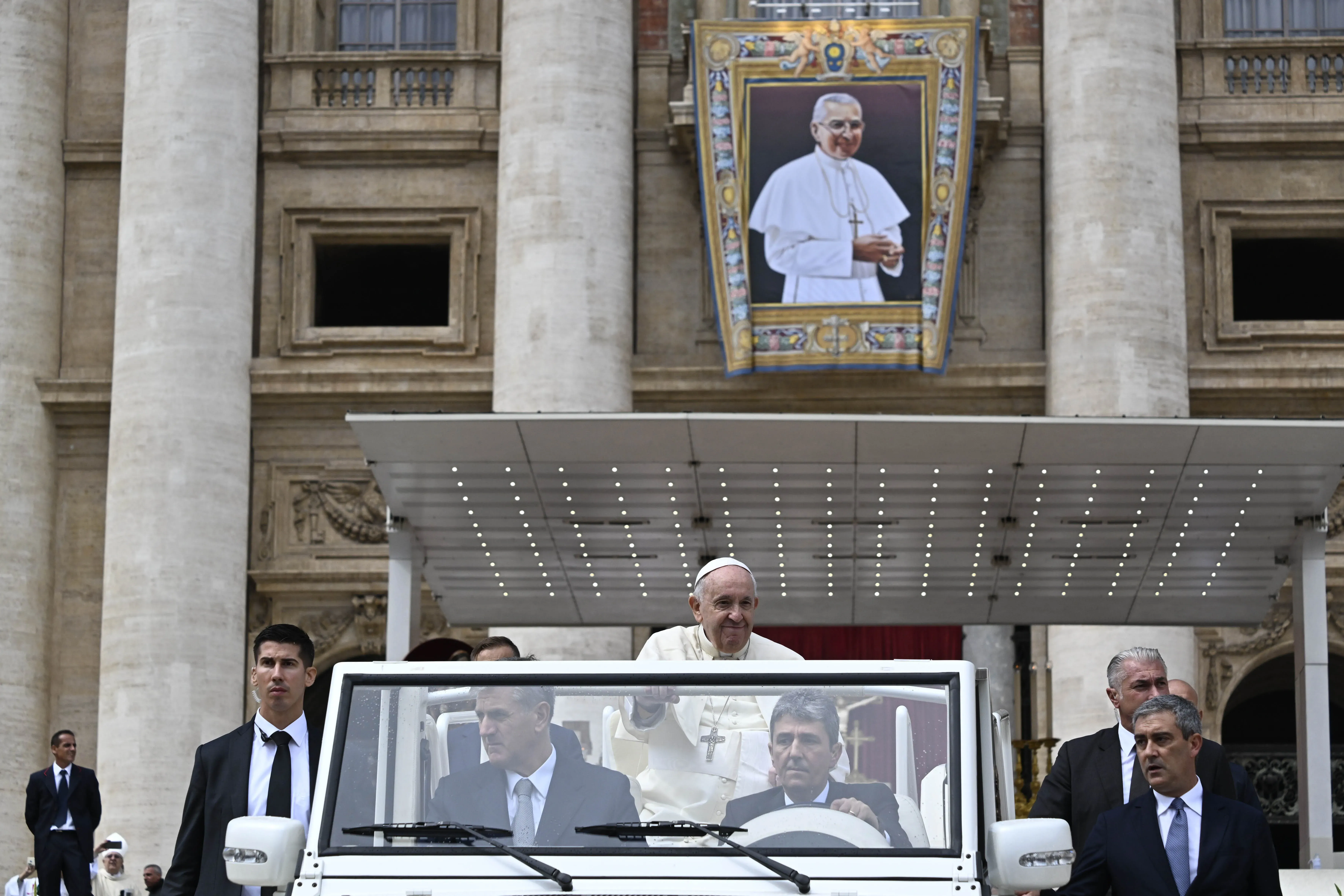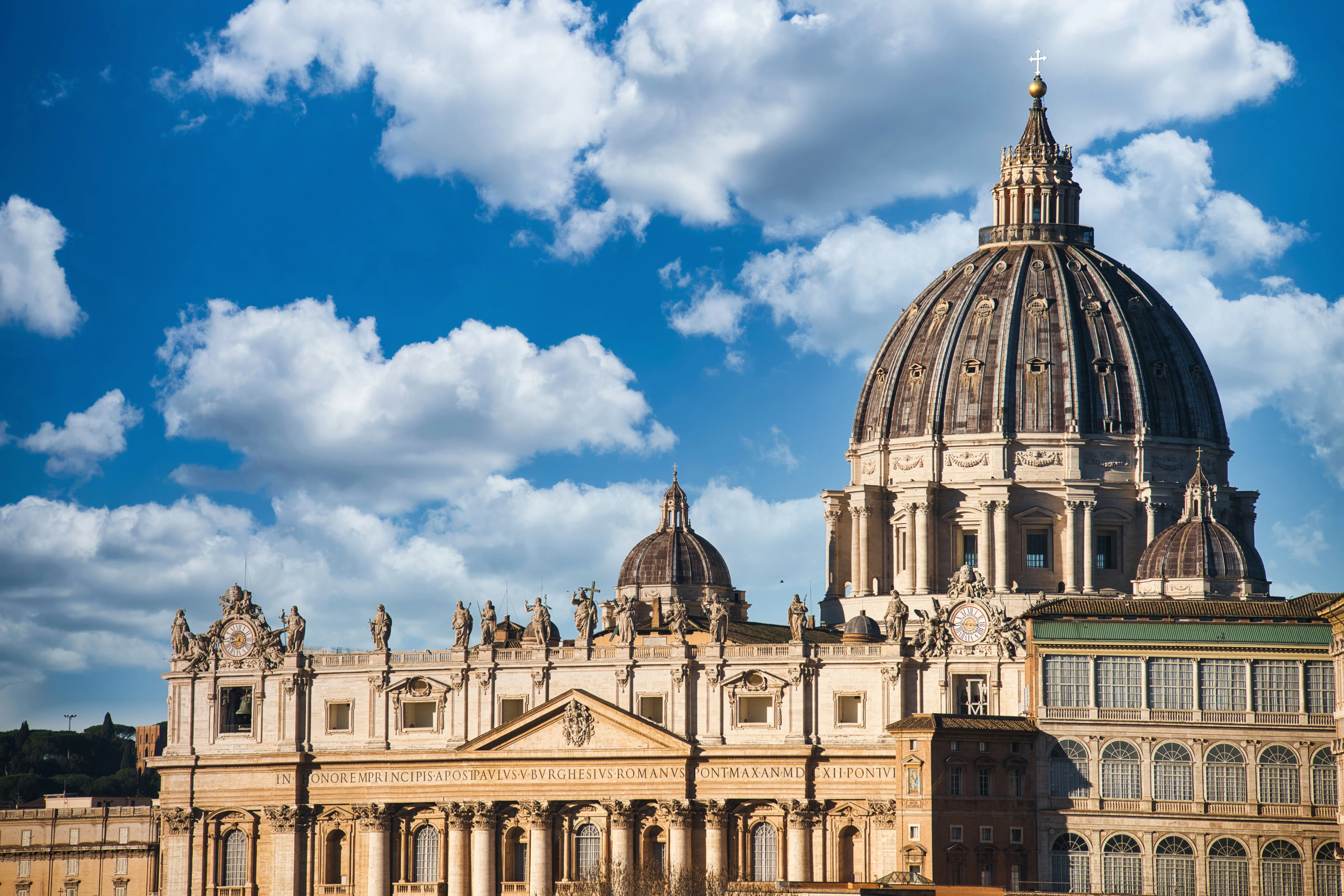“With a smile, Pope John Paul I managed to communicate the goodness of the Lord,” Francis said.
“How beautiful is a Church with a happy, serene and smiling face, that never closes doors, never hardens hearts, never complains or harbors resentment, does not grow angry or impatient, does not look dour or suffer nostalgia for the past. Let us pray to him, our father and our brother, and ask him to obtain for us ‘the smile of the soul.’”
" width="300" height="150" frameborder="0" allowfullscreen="allowfullscreen">
During the beatification, a large banner on St. Peter’s Basilica unveiled a portrait of Blessed Pope John Paul I as the pope’s postulator processed through the square with a relic—a handwritten note by the blessed pope on the theological virtues.
John Paul I presided over only four general audiences as pope, offering catecheses on poverty, faith, hope, and charity. Pope Francis quoted these catecheses throughout his homily.
“As Pope John Paul I said, if you want to kiss Jesus crucified, ‘you cannot help bending over the cross and letting yourself be pricked by a few thorns of the crown on the Lord’s head’ (General Audience, 27 September 1978). A love that perseveres to the end, thorns and all: no leaving things half done, no cutting corners, no fleeing difficulties,” Pope Francis said.
John Paul I was the first pope to be born in the 20th century and the most recent pope to be born in Italy. Born Albino Luciani on Oct. 17, 1912, the future John Paul I grew up in relative poverty in Italy's northern Veneto region.
At the age of 22, he was ordained a priest for the Italian diocese of Belluno e Feltre in 1935. He served as the rector of the diocese's seminary for 10 years and taught courses on moral theology, canon law, and sacred art.
He participated in all of the sessions of the Second Vatican Council (1962-1965) as the bishop of Vittorio Veneto and he worked to implement the guidelines council in the following decade as the Patriarch of Venice.
As a cardinal, Luciani published a collection of “open letters” to historic figures, saints, famous writers, and fictional characters. The book, Illustrissimi, included letters to Jesus, King David, Mark Twain, Charles Dickens, and Christopher Marlowe, as well as Pinocchio and Figaro, the barber of Seville.








